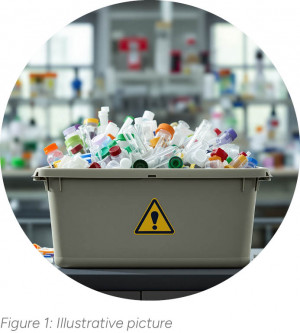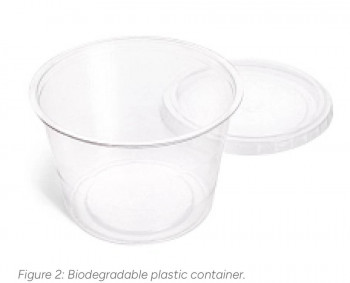Saving Plastics for Sustainable Development in ALS Laboratories
Published: February 2025
Download PDF
EnviroMail_24_Europe_Saving Plastics for Sustainable Development in ALS Laboratories
 Environmental analytical laboratories play a key role in protecting the environment, and it is therefore essential that they themselves take action towards sustainability. This EnviroMail focuses on the annual plastic savings that one unit of European laboratories have achieved through innovative approaches and changes in working practices. Specific measures such as replacing single-use plastics with reusable alternatives, optimizing processes and using modern technologies were used for plastic saving. Our achievements show that SUSTAINABILITY is not just a word for us, but we are continuously working on a greener future.
Environmental analytical laboratories play a key role in protecting the environment, and it is therefore essential that they themselves take action towards sustainability. This EnviroMail focuses on the annual plastic savings that one unit of European laboratories have achieved through innovative approaches and changes in working practices. Specific measures such as replacing single-use plastics with reusable alternatives, optimizing processes and using modern technologies were used for plastic saving. Our achievements show that SUSTAINABILITY is not just a word for us, but we are continuously working on a greener future.
In recent decades, plastic has become an integral part of our lives. Its practical properties such as low weight, durability, and low cost have led to its global mass use. However, the increase in plastic waste, especially single-use plastics, has caused significant environmental problems. In the laboratory, we also use a lot of laboratory utensils and equipment made of plastic. Most of them end up as hazardous waste after the use. Reducing the amount of plastic consumables used has become one of our company's key sustainability issues.
Problems with plastics
Plastics, particularly single-use items like plastic bottles, bags, packaging, and straws, are a major source of waste that pollutes our oceans, rivers, and land. This waste is highly resistant to decomposition, leading plastic items to persist in the environment for decades or even hundreds of years. Microplastics, tiny pieces of plastic, are not only found in the natural world but also in the food chain, posing a risk to both human and animal health.
Sustainable approaches to plastics saving
In the fight against plastic waste, there are a number of initiatives aimed at saving plastic and promoting sustainable development. Key approaches include:
1) Reducing plastic consumption
Reducing the consumption of plastics, especially single-use plastics, is a key part of the solution to the plastic problem. This includes reducing the use of plastic consumables, or at least using smaller sizes of different containers and tubes that are then lighter in weight or substituting other materials.
2) Plastic recycling
Plastic recycling is another key tool in the fight against the plastic waste. Improving recycling processes, introducing new technologies and promoting recycled materials in industry can help to significantly reduce plastic waste. In addition, recycling plastics saves natural resources, reduces CO2 emissions and helps to save energy.
3) Alternatives to plastics
The development of alternative materials to plastics is a further step towards sustainability. For example, bioplastics, made from renewable raw materials such as corn or potatoes, are a greener alternative to traditional plastics. Some companies are also focusing on creating packaging that is compostable or easily recyclable.
Towards ALS Net Zero 2050
Saving plastics is a key to achieving the Sustainable Development Goals. In one of the main European laboratories, it was managed to reduce plastic waste production by 1,758 kg in the last financial year 2023/2024. When the weight of plastic is taken into consideration, the saving in amount of waste is significant.
Plastics saving areas:
- Use of smaller disposable plastic test tubes.
Total savings: 915 kg
- Replacement of plastic containers with containers made of bioplastic.
Total savings: 412 kg - Ensuring recycling of used plastic products.
Total savings: 152 kg - Replacing plastic packaging with paper packaging that is more easily recycled.
Total savings: 145 kg - Reducing the consumption of plastic containers.
Total savings: 58 kg - Purchase of non-packaged laboratory syringes for water sample filtration.
Total savings: 47 kg - Discontinuation of the purchase of bottled water.
Total savings: 20 kg - Implementation of electronic documentation management system, reduction of EURO packaging
consumption.
Total savings: 10 kg
Conclusions
Saving plastics is an essential step towards protecting the environment and promoting sustainable development. It is a challenge that requires a coordinated effort by all. Reducing plastic consumption, improving recycling processes, promoting alternative materials and changing consumption habits are key factors in ensuring a sustainable future for our planet. By continuing to work towards these goals, we can help to protect natural resources, improve health and ensure a good quality of life for future generations.


